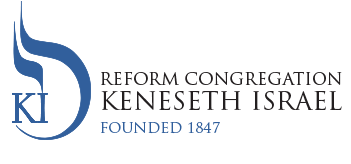Ukraine is in the news. Daily reports pour in about the buildup of Russian troops, as many as 130, 000, to the north, east and south of the country. Diplomatic activity is also escalating but without a clear path to resolving the situation. NATO is on alert. Ukrainian civilians are beginning to train militia style to resist a possible invasion. Worst of all are the projections of massive casualties, especially if the capital city of Kiev is attacked. It is a “night of watching” for Ukraine.
In the middle of this storm is Ukraine’s Jewish community and remarkably, although only 100,000 Ukrainians are Jews at this moment, the President of the country, Volodymr Zelensky, is Jewish and publically embraces his identity. Few countries, including the United States, can make that claim. Eight decades ago, members of the Zelensky family were murdered during the Holocaust and others fought in the Red Army.
Another surprising fact about the Ukrainian Jewish heritage is that the story of Fiddler on the Roof actually took place in Ukraine, not in Russia. At the end of the 19th century, Ukraine was in the ‘Pale of Settlement,’ a vast area established by the Czars to quarantine Jews along the western border of the vast Russian Empire. The Pale included not only Ukraine but also Poland and other large centers of Jewish population. Indeed, the territory of the Pale was the site of the largest population in the world until the Shoah.
Today, it is difficult to know exactly how many Jews live in Ukraine, perhaps 100,000 down considerably from 400,000 before the massive waves of Jewish immigration at the end of the 20th century. Currently, Ukraine has the fourth largest Jewish community in Europe following France, Great Britain and Russia but ahead or equal to Germany. Included in that Ukrainian Jewish population are thousands of Israelis as well as Hasidim, mostly Bratslavers, who have returned to their original villages south of Kiev to be near the grave of their Rebbes where they have re-established Yiddish speaking communities. Yes, you read that correctly, as crazy as it may sound. There literally are new shtetls in “the old country.
Historians speculate that Jews have lived in the Ukraine since the 8th century and the conversion of Khazars (to the east) to Judaism. Some researchers speculate that Jews were involved in the founding of Kiev itself. By 1648, the Jewish population of Ukraine, then part of Poland, was massive and as many as 20,000 Jewish civilians (revised from earlier estimates of as high as 250,000) were killed during the Khmelnytsky Cossack Uprising, 1648-1655. One hundred years later, the Hasidic movement in Judaism started among Ukrainian Jews in villages to the south and west of Kiev and quickly spread across much of East Europe. In 1791, the Pale was established on the western edge of the Russian Empire to contain (geographically) the country’s vast Jewish population. The region’s culturally rich Jewish life is featured in the literary work of the great Yiddish writer, Sholem Aleichem (1859-1916). Subsequently, both Czars and Soviets targeted Ukraine for Jewish settlement as part of their respective south Russia policies.
Long caught in the crosshairs of history, Ukraine’s Jewish population suffered terribly during the pogroms of the late 19th century, which led to massive Jewish immigration, principally to the United States. They also sparked the development of the Zionist movement. Odessa became a leading port city for early Zionist pioneers on their way to Turkish Palestine, some of whom trained in Jewish agricultural schools in that region. They went on to help create some of the original kibbutzim. My guess is that as many as 40% of Philadelphia’s Jews by 1920 came to the City of Brotherly Love from Ukraine and constituted the area’s largest Jewish sub-ethnicity.
Subsequently, Ukrainian Jews were again caught in the crossfire of history during the Russian Revolution and the bloody wars, which followed until the founding of the Soviet Union in 1922, five years after the Bolsheviks first sought to overthrow the Czar. Soviet Communists then worked to destroy all religious expressions of Judaism in the USSR and control the nature of secular Jewish, mostly Yiddish, culture in their country. In the early 1930s, Stalin’s policies of collectivization and political suppression led to the complete failure of the Ukrainian agricultural sector and led to millions of deaths by starvation. During this period known as the Holodomor, Jews increasingly left their villages in Ukraine to look for food and work in the larger cities intensifying the region’s native anti-Semitism.
But the worst was yet to come. In 1942, the Nazis broke their non-aggression treaty with Russia and launched Operation Barbarossa, the largest military operation in history, to create “living space” for Germany in the east and seize the area’s rich natural resources. SS Einsatzgruppen followed the German army and slaughtered as many as one million Ukrainian Jews in mass shootings including the massacre at Babi Yar in September 1942. Knowledge of Babi Yar was suppressed by the Communists who ruled Ukraine until 1991 and the fall of the Soviet Union.
Since independence, Ukraine has witnessed both massive emigration and a revival of Judaism although most of the country’s Jews, who are Russian speakers, are secular. Today there are large Jewish Community Centers in Ukraine, 30 some Chabad houses and other Hasidic communities. The Reform movement in Judaism claims that as many as 14,000 Ukrainian Jews identify with it. Reports from Ukraine suggest that the country’s Jewish population plans to remain in place as the drama with Russia and a potential military invasion unfolds. Whatever happens, Ukrainian Jews again find themselves caught in the crosshairs of history. As Tevye the Milkman said in Fiddler, “may God be with them.”
Shabbat Shalom,
Rabbi Lance J. Sussman, Ph.D.
(Based on my KI sermon ~ Friday, February 11, 2022)
https://forward.com/yiddish/482760/the-stormy-yet-rich-history-of-the-jews-in-ukraine/
